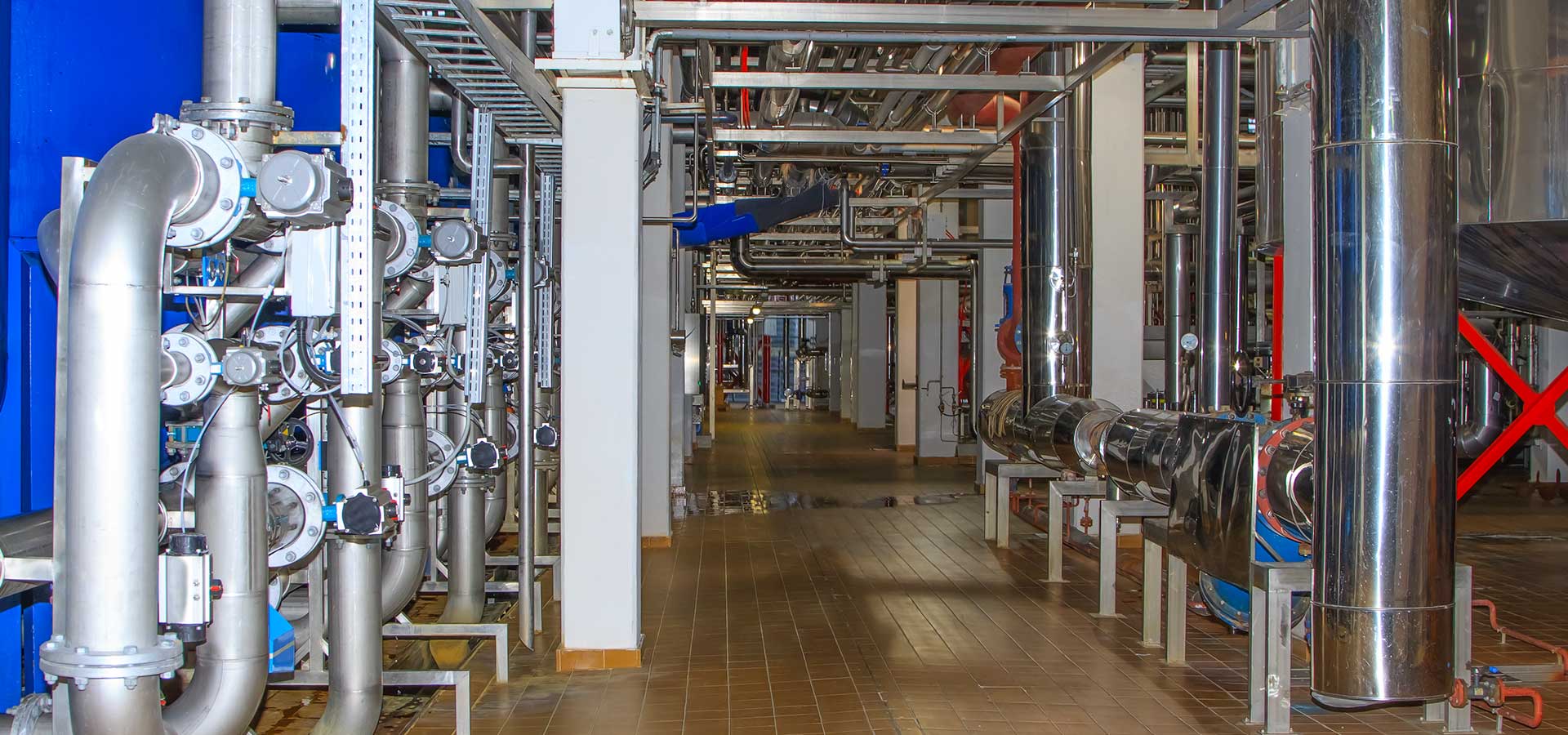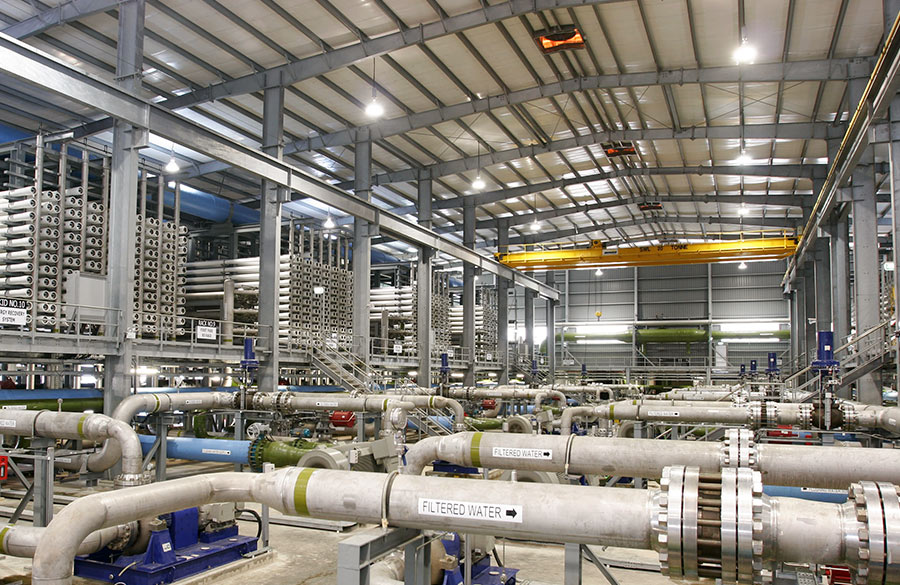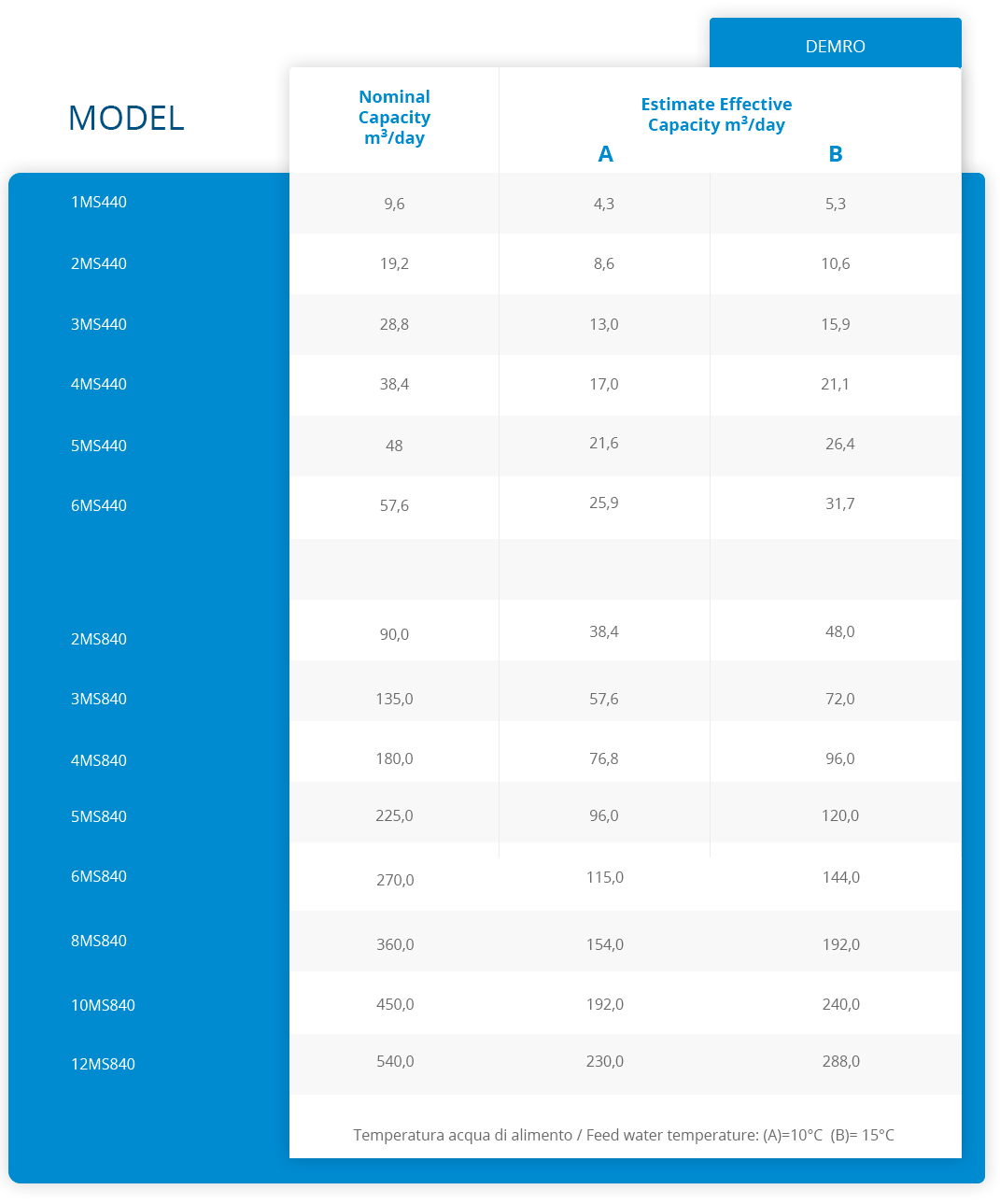Reverse Osmosis Demro Deionizers
For production of deionized ultrapure water
Basic Principle
Reverse Osmosis Desalinators
Marinco deionizers series Demro operate on the reverse osmosis principle which consists of salts and organics removal from water by means of one or more semipermeable membranes.
In order to function efficiently it is necessary to pressurize the water to deionized inside the membranes.
Under the effect of pressure only pure water H2O and a very small quantity of salts pass through the membrane and this portion is said “penneate”. The remaining part is a more concentrated water which contains all removed salts and all organics and it is said “concentrate”, which is sent to drain.
Our Demro are very simple to use and they require very low maintenance and man labour.
Deionizers Demro
Principal Advantage
Reverse osmosis technology allows to transform feed water up to 80% as deionized water: The discarded water is normally a concentrate water within the limits of the waste water maximum pollution standards so there is no requirement concerning water pollution. At the contrary, using ion exchange resin deionizers the water produced during resins regeneration can not be drained-off because it is much over the maximum levels acceptable for waste water drain.
A further advantage is that the produced water by Demro systems is sterile because viruses and bacteria are much larger than the membrane pores and they can not pass through.
Availables Membranes
Marinco units have one or more spiral wound membranes and placed inside suitable vessels in stainless steel or reinforced polyester fibers depending on the models. Our membranes are in polyammide, which is the best up to date polymer for membranes. Depending on the needs we have available 2 types of spiral wound membranes:
- Normal BW membranes having 98% salt rejection for monovalent ions and 99% for polyvalent ions. So far, treating normal municipal water with about 300-400 mg/l TDS and 75% recovery rate the produced water has an approximate residual salinity of 10 mg/l as TDS;
- Special LP-HR membranes having over 99.2% salts rejection for monovalent ions and over 99.5% for polyvalent ions. In this case residual salinity has only 5 mg/I TDS and even less.
When lower TDS is required we install after our Demro units a mixed bed ion exchange resin deionizer which has only the function of a final polishing.
Water Treatment
Raw water pre-treatment
 Necessary to avoid calcium and magnesium scale on membrane surface.
Necessary to avoid calcium and magnesium scale on membrane surface.
Required for feed water when there is not a water softener before our Damro plant.
Chemical pre-treatment is normally made just adding 5 – 8 ppm of our scale inhibitor Osmoguard by means of our dosing pump PD-1 supplied in extra price.
Sometimes it is required to remove iron and/or silica or to remove turbidity or also remove colloidal particles adding flocculation chemical.
In certain cases we must disinfect raw water with ultraviolets or with chlorine and subsequent sodium bisulphite addition for chlorine removal.
Pre-treatment muse be studied case by case depending on water analysis.
Produced water post-treatment
 Sometimes it is required to produce ultrapure water with salinity lower than 5 ppm down to 0.1 ppm.
Sometimes it is required to produce ultrapure water with salinity lower than 5 ppm down to 0.1 ppm.
In this case we install downstream a mixed polishing water ion exchange deionizer that we propose case by case depending on customer needs.
Sometimes we supply one of our UV sterilizers to be placed after pure water storage tank and when needed we also supply continuos recirculation system to maintain constant ultrapure water quality.
Sand filter
If water to be desalted is turbid or too rich of suspended particles it is advisable a prefiltration using one of our sand filters in order to increase the life of the 5 microns
cartridges placed inside the fine filter.
The sand filter is formed by a RGF column filled with fine sand. The filter is complete of valves for periodical backwash.
Uses of demineralized water and our separation processes
• Ultrapure water pharmaceutical 500 I/h
• Ultrapure water pharmaceutical 1200 I/h
• How to improve productivity of pharmaceutical water with EDI
• Steam boiler feed
• Bottled water
• Make up of cooling towers
• Milk recovery from drain off
• Ultrapure water for production of cosmetics – perfume detergents – sanitary products and similars
• Ultrapure water in the beverage production
• Cold concentration of grape juice and other food grade juices
• Water treatment plants in the electrical power station
• Membrane degasifier for soft drinks, coffe and tea
• Membrane degasifier for beer production
• Photovoltaic
• Differences in water deionization
• Reverse Osmosis water production costs







